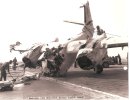Has there been any evidence to change the previous conclusion that one of the pilots held full back stick for (excuse me, I dont remember exactly) for something like 2 minutes while the other pilots had no idea of his inputs? In my un-educated with aerobus jets opinion, that behavior is absolutely indefensible for anyone who hopes to call themself a pilot. I dont care what the auto-pilot/ alternate law/ whatever is supposed to do, thats just ridiculous.
I havent flown that many planes, but i cant think of any situation when i would hear a stall warning, see loss of altitude, and still hold full backstick. Unless you are in the SR-71, you cant hold full back stick for 2 minutes at 30K and not expect to crash.
 Paradise awaits you.
Paradise awaits you.






